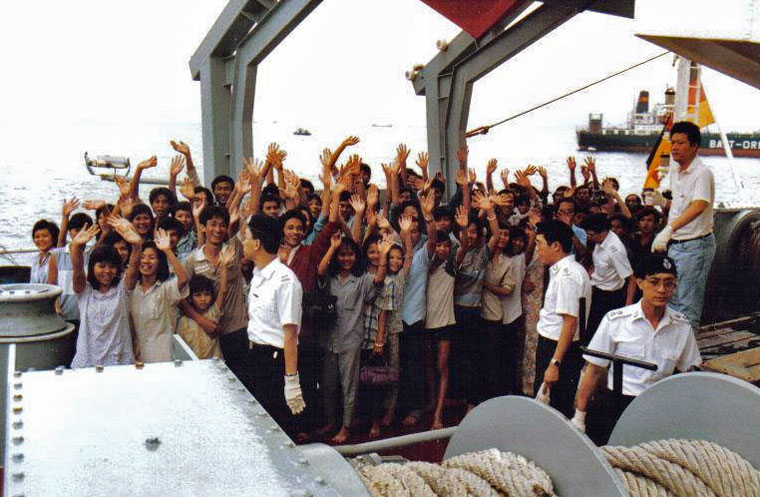In the previous article on Singapore's role in taking in refugees, "In 1978, S’pore’s Vietnamese Refugee Camp in Sembawang was one of the more humane camps in the region", it made it look as if Hawkins Road in Sembawang was a holiday haven or resort chalet for Vietnamese refugees who landed in Singapore after the end of the Vietnam War as they are pictured sitting around eating pho and having a rather pleasant time.
The truth of the matter was that their arrival in Singapore was provisionally accepted -- albeit very reluctantly -- and with multiple conditions and restrictions imposed.
The current humanitarian crisis this past week, which has been widely reported internationally, has once again highlighted the plight of boat people -- this time migrants from Bangladesh and Burma -- who are looking to land at surrounding Southeast Asian countries.
This event has once again piqued Singaporeans' interest in the subject of refugees and what are Asean nations doing about it collectively.
For a deeper understanding of Singapore's long-standing position when it comes to refugees, refer to this piece, "Singapore Slams Door To Refugees" from The New York Times, November 13, 1978:
"You've got to grow calluses on your heart or you just bleed to death," said Lee Kuan Yew, allowing a long pause before he spoke.
Lee, the prime minister was explaining Singapore's position on permitting Vietnamese refugees to come ashore. It consists of driving back out to sea those who arrive in the small fishing boats in which they escaped from their country and those rescued at sea by passing ships; it allows ashore only people who are guaranteed to be accepted by another country within 90 days.
Last month Singapore instituted another restriction, in which the number of those allowed ashore under guarantee of speedy departure will be limited to 1,000 at any given time. In addition, countries that exceed the 90-day deadline will be penalized by even sharper restrictions. More than 800 refugees are currently awaiting departure from Singapore.
In 1978, when Singapore had two-million population, it was noted that our population density then was already one of the highest in the world (we have about 5.5 million people in 2014).
Singapore, which with more than two million people has one of the highest population densities in the world, accepts no refugees for permanent asylum. The same attitude prevails throughout Asia, though perhaps with less justification. But Singapore, unlike countries such as Malaysia and Thailand, rejects even the principle of granting temporary shelter to "boat people" who drift in from the sea. Its patrol craft drive off all such refugees.
"We don't want to create a Palestinian situation," said Foreign Minister Sinnathamby Rajaratnam in a a separate interview. "We cannot afford a population of embittered, inchoate refugees."
Furthermore, letting the Vietnamese boat people ashore in the 1970s was conditional on the fact that they could also stay temporarily for three months:
Lee said that Singapore was prepared to be flexible on the 1,000-refugee ceiling as well as on the 90-day limit if third countries were ready to guarantee that refugees would be accepted for immigration. "We have said that we will take as many people as there are places for them to go," he reiterated.
"They can be processed here, if that's the word they use, for medical and other immigration reasons, but I just can't accept them," he continued. "It's not possible."
The Ministry of Home Affairs (MHA) had said on May 15, 2015, that Singapore will not be accepting refugees or people seeking political asylum.
According to a MHA spokesperson:
“As a small country with limited land, Singapore is not in a position to accept any persons seeking political asylum or refugee status, regardless of their ethnicity or place of origin.”
That's pretty much the stance all along -- albeit not in as harsh a tone as the late Prime Minister's.
You can read The New York Times article in full here.
Related article:
If you like what you read, follow us on Facebook and Twitter to get the latest updates.
If you like what you read, follow us on Facebook, Instagram, Twitter and Telegram to get the latest updates.
